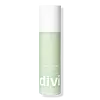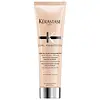What's inside
What's inside
 Key Ingredients
Key Ingredients

 Benefits
Benefits

 Concerns
Concerns

 Ingredients Side-by-side
Ingredients Side-by-side

Water
Skin ConditioningPropanediol
SolventEthylhexyl Olivate
Skin ConditioningCetearyl Alcohol
EmollientIsopentyldiol
HumectantStearamidopropyl Dimethylamine
EmulsifyingCocos Nucifera Oil
MaskingQuaternium-80
Lactic Acid
BufferingGlycerin
HumectantBehentrimonium Chloride
PreservativeMentha Piperita Oil
MaskingMethylpropanediol
SolventCaprylyl Glycol
EmollientMelaleuca Alternifolia Leaf Oil
AntioxidantTetrasodium Glutamate Diacetate
Polyquaternium-37
Oryza Sativa Bran Extract
Skin ConditioningPolyquaternium-80
CleansingSqualane
EmollientIsopropyl Alcohol
SolventSodium Hydroxide
BufferingDidecyldimonium Chloride
EmulsifyingGlyceryl Stearate
EmollientHelianthus Annuus Extract
EmollientMedicago Sativa Extract
TonicHumulus Lupulus Extract
AntimicrobialMelilotus Officinalis Extract
AstringentRosmarinus Officinalis Extract
AntimicrobialSodium PCA
HumectantBiotin
AntiseborrhoeicCaffeine
Skin ConditioningSodium Lactate
BufferingArginine
MaskingBenzyl Alcohol
PerfumingRosmarinus Officinalis Leaf Extract
AntimicrobialTocopherol
AntioxidantAspartic Acid
MaskingPCA
HumectantGlycine
BufferingAlanine
MaskingSerine
MaskingDehydroacetic Acid
PreservativeValine
MaskingThreonine
Proline
Skin ConditioningIsoleucine
Skin ConditioningPhenylalanine
MaskingHistidine
HumectantLimonene
PerfumingLinalool
PerfumingWater, Propanediol, Ethylhexyl Olivate, Cetearyl Alcohol, Isopentyldiol, Stearamidopropyl Dimethylamine, Cocos Nucifera Oil, Quaternium-80, Lactic Acid, Glycerin, Behentrimonium Chloride, Mentha Piperita Oil, Methylpropanediol, Caprylyl Glycol, Melaleuca Alternifolia Leaf Oil, Tetrasodium Glutamate Diacetate, Polyquaternium-37, Oryza Sativa Bran Extract, Polyquaternium-80, Squalane, Isopropyl Alcohol, Sodium Hydroxide, Didecyldimonium Chloride, Glyceryl Stearate, Helianthus Annuus Extract, Medicago Sativa Extract, Humulus Lupulus Extract, Melilotus Officinalis Extract, Rosmarinus Officinalis Extract, Sodium PCA, Biotin, Caffeine, Sodium Lactate, Arginine, Benzyl Alcohol, Rosmarinus Officinalis Leaf Extract, Tocopherol, Aspartic Acid, PCA, Glycine, Alanine, Serine, Dehydroacetic Acid, Valine, Threonine, Proline, Isoleucine, Phenylalanine, Histidine, Limonene, Linalool
Water
Skin ConditioningGlycerin
HumectantCetearyl Alcohol
EmollientHelianthus Annuus Seed Oil
EmollientHydroxypropyl Guar
Emulsion StabilisingStearamidopropyl Dimethylamine
EmulsifyingCetyl Esters
EmollientCaprylyl Glycol
EmollientGlyceryl Stearate
EmollientSalicylic Acid
MaskingBenzyl Salicylate
PerfumingLinalool
PerfumingBenzyl Alcohol
PerfumingTartaric Acid
BufferingMel Extract
Moisturising2-Oleamido-1,3-Octadecanediol
Skin ConditioningCitric Acid
BufferingParfum
MaskingWater, Glycerin, Cetearyl Alcohol, Helianthus Annuus Seed Oil, Hydroxypropyl Guar, Stearamidopropyl Dimethylamine, Cetyl Esters, Caprylyl Glycol, Glyceryl Stearate, Salicylic Acid, Benzyl Salicylate, Linalool, Benzyl Alcohol, Tartaric Acid, Mel Extract, 2-Oleamido-1,3-Octadecanediol, Citric Acid, Parfum
 Reviews
Reviews

Ingredients Explained
These ingredients are found in both products.
Ingredients higher up in an ingredient list are typically present in a larger amount.
Benzyl Alcohol is most commonly used as a preservative. It also has a subtle, sweet smell. Small amounts of Benzyl Alcohol is not irritating and safe to use in skincare products. Most Benzyl Alcohol is derived from fruits such as apricots.
Benzyl Alcohol has both antibacterial and antioxidant properties. These properties help lengthen the shelf life of products. Benzyl Alcohol is a solvent and helps dissolve other ingredients. It can also improve the texture and spreadability.
Alcohol comes in many different forms. Different types of alcohol will have different effects on skin. This ingredient is an astringent alcohol.
Using high concentrations of these alcohols are drying on the skin. They may strip away your skin's natural oils and even damage your skin barrier. Astringent alcohols may also irritate skin.
Other types of astringent alcohols include:
According to the National Rosacea Society based in the US, you should be mindful of products with these alcohols in the top half of ingredients.
Any type of sanitizing product will have high amounts of alcohol to help kill bacteria and viruses.
Learn more about Benzyl AlcoholCaprylyl Glycol is a humectant and emollient, meaning it attracts and preserves moisture.
It is a common ingredient in many products, especially those designed to hydrate skin. The primary benefits are retaining moisture, skin softening, and promoting a healthy skin barrier.
Though Caprylyl Glycol is an alcohol derived from fatty acids, it is not the kind that can dry out skin.
This ingredient is also used as a preservative to extend the life of products. It has slight antimicrobial properties.
Learn more about Caprylyl GlycolCetearyl alcohol is a mixture of two fatty alcohols: cetyl alcohol and stearyl alcohol. It is mainly used as an emulsifier. Emulsifiers help prevent the separation of oils and products. Due to its composition, it can also be used to thicken a product or help create foam.
Cetearyl alcohol is an emollient. Emollients help soothe and hydrate the skin by trapping moisture.
Studies show Cetearyl alcohol is non-toxic and non-irritating. The FDA allows products labeled "alcohol-free" to have fatty alcohols.
This ingredient is usually derived from plant oils such as palm, vegetable, or coconut oils. There is debate on whether this ingredient will cause acne.
Due to the fatty acid base, this ingredient may not be Malassezia folliculitis safe.
Learn more about Cetearyl AlcoholGlycerin is already naturally found in your skin. It helps moisturize and protect your skin.
A study from 2016 found glycerin to be more effective as a humectant than AHAs and hyaluronic acid.
As a humectant, it helps the skin stay hydrated by pulling moisture to your skin. The low molecular weight of glycerin allows it to pull moisture into the deeper layers of your skin.
Hydrated skin improves your skin barrier; Your skin barrier helps protect against irritants and bacteria.
Glycerin has also been found to have antimicrobial and antiviral properties. Due to these properties, glycerin is often used in wound and burn treatments.
In cosmetics, glycerin is usually derived from plants such as soybean or palm. However, it can also be sourced from animals, such as tallow or animal fat.
This ingredient is organic, colorless, odorless, and non-toxic.
Glycerin is the name for this ingredient in American English. British English uses Glycerol/Glycerine.
Learn more about GlycerinGlyceryl Stearate is a mix of glycerin and stearic acid.
It is used to stabilize the mixing of water and oil ingredients. By preventing these ingredients from separating, it can help elongate shelf life. It can also help thicken the product's texture.
As an emollient, it helps soften skin and supports barrier-replenishing ingredients.
In cosmetics, Glyceryl Stearate is often made from vegetable oils or synthetically produced.
This ingredient may not be fungal-acne safe
Fun fact: The human body also creates Glyceryl Stearate naturally.
Learn more about Glyceryl StearateLinalool is a fragrance and helps add scent to products. It's derived from common plants such as cinnamon, mint, citrus, and lavender.
Like Limonene, this ingredient oxidizes when exposed to air. Oxidized linalool can cause allergies and skin sensitivity.
This ingredient has a scent that is floral, spicy tropical, and citrus-like.
Learn more about LinaloolWe don't have a description for Stearamidopropyl Dimethylamine yet.
Water. It's the most common cosmetic ingredient of all. You'll usually see it at the top of ingredient lists, meaning that it makes up the largest part of the product.
So why is it so popular? Water most often acts as a solvent - this means that it helps dissolve other ingredients into the formulation.
You'll also recognize water as that liquid we all need to stay alive. If you see this, drink a glass of water. Stay hydrated!
Learn more about Water